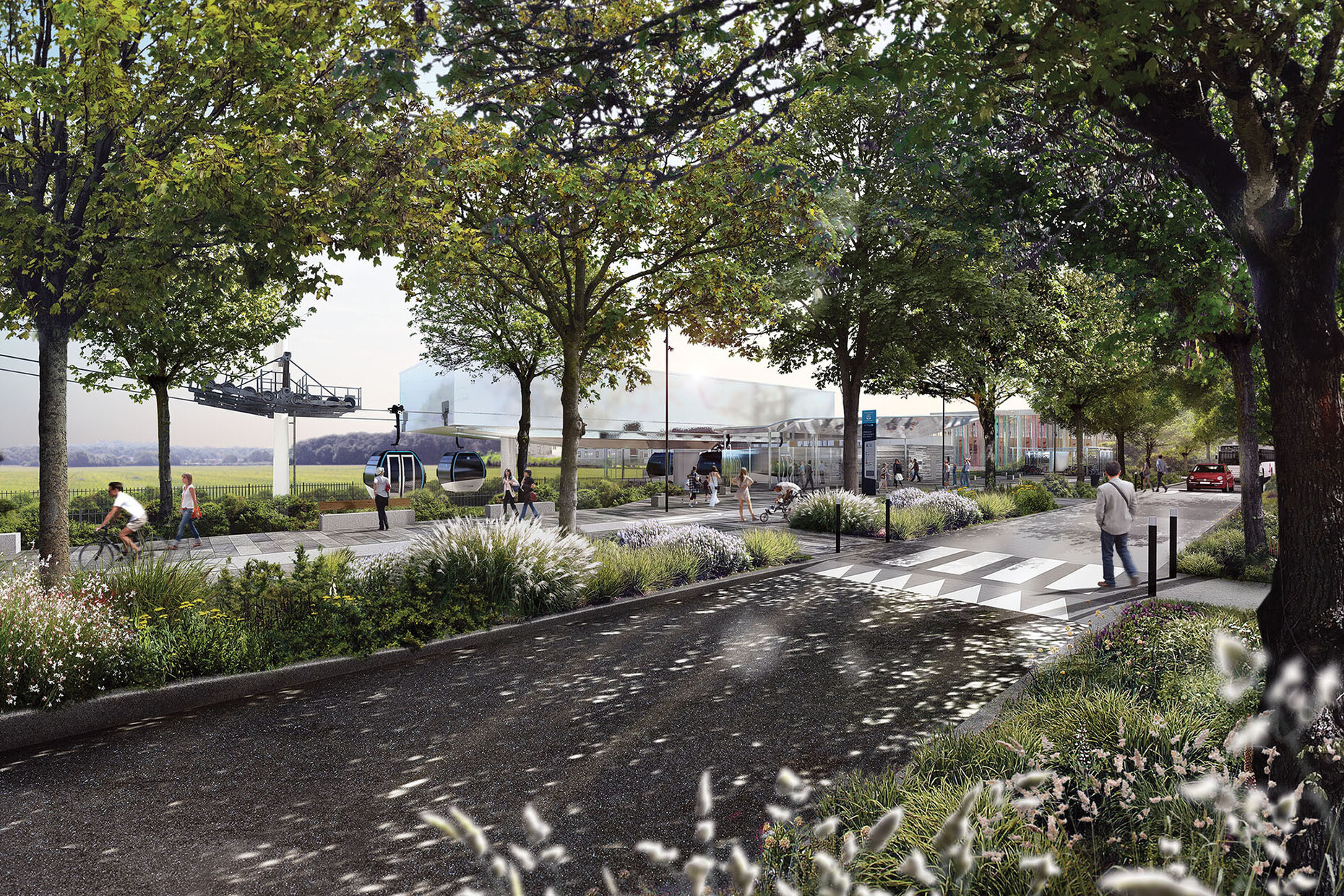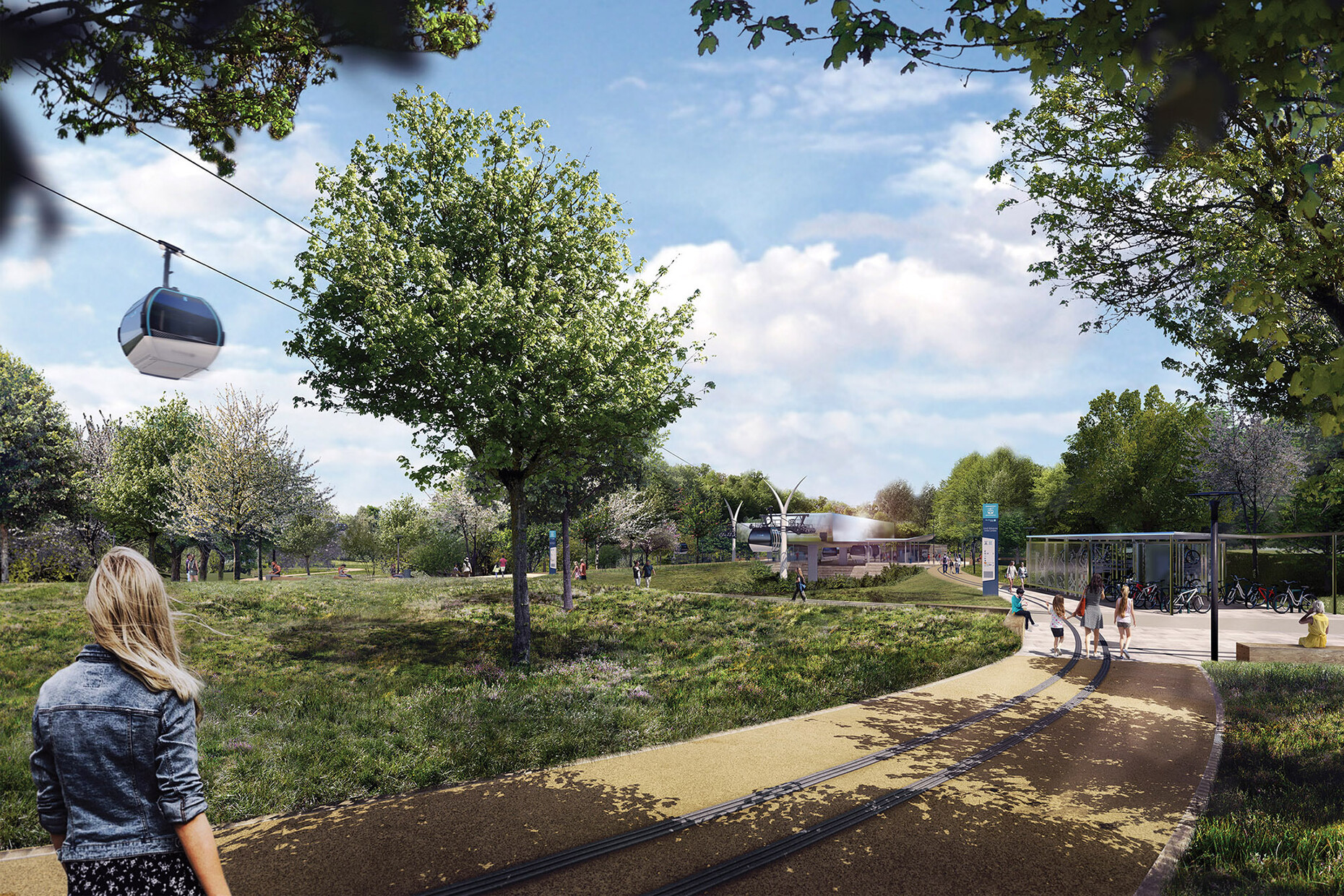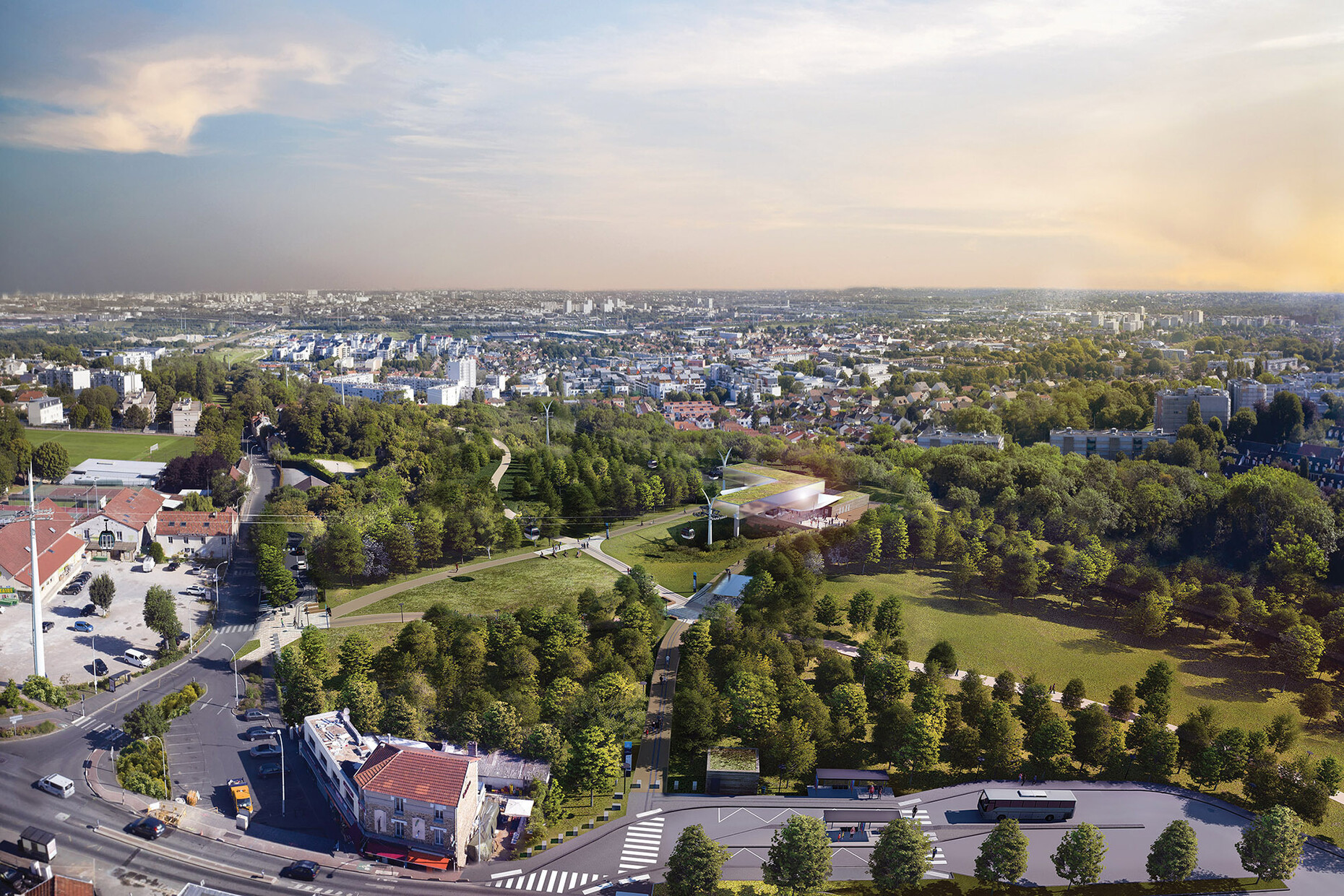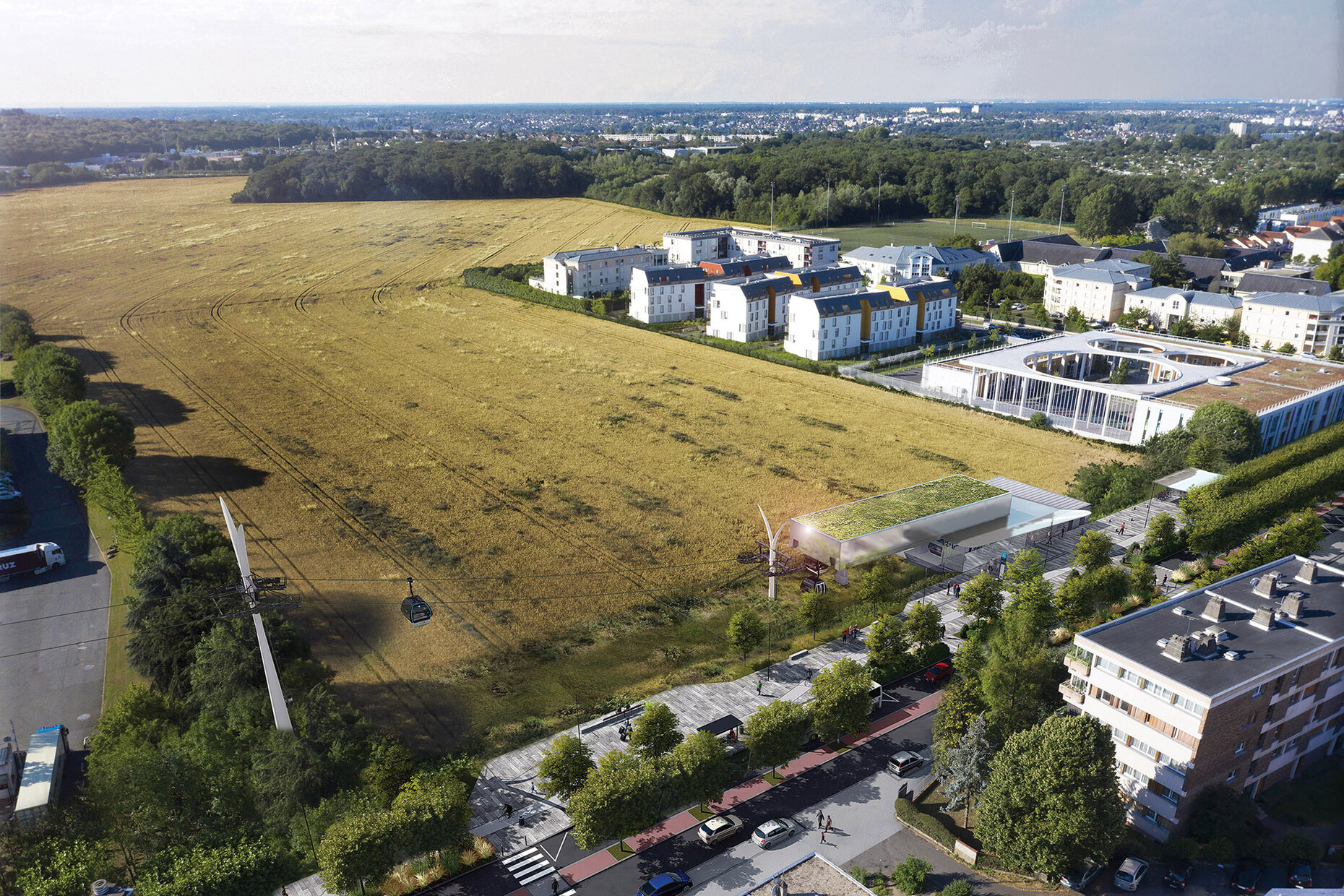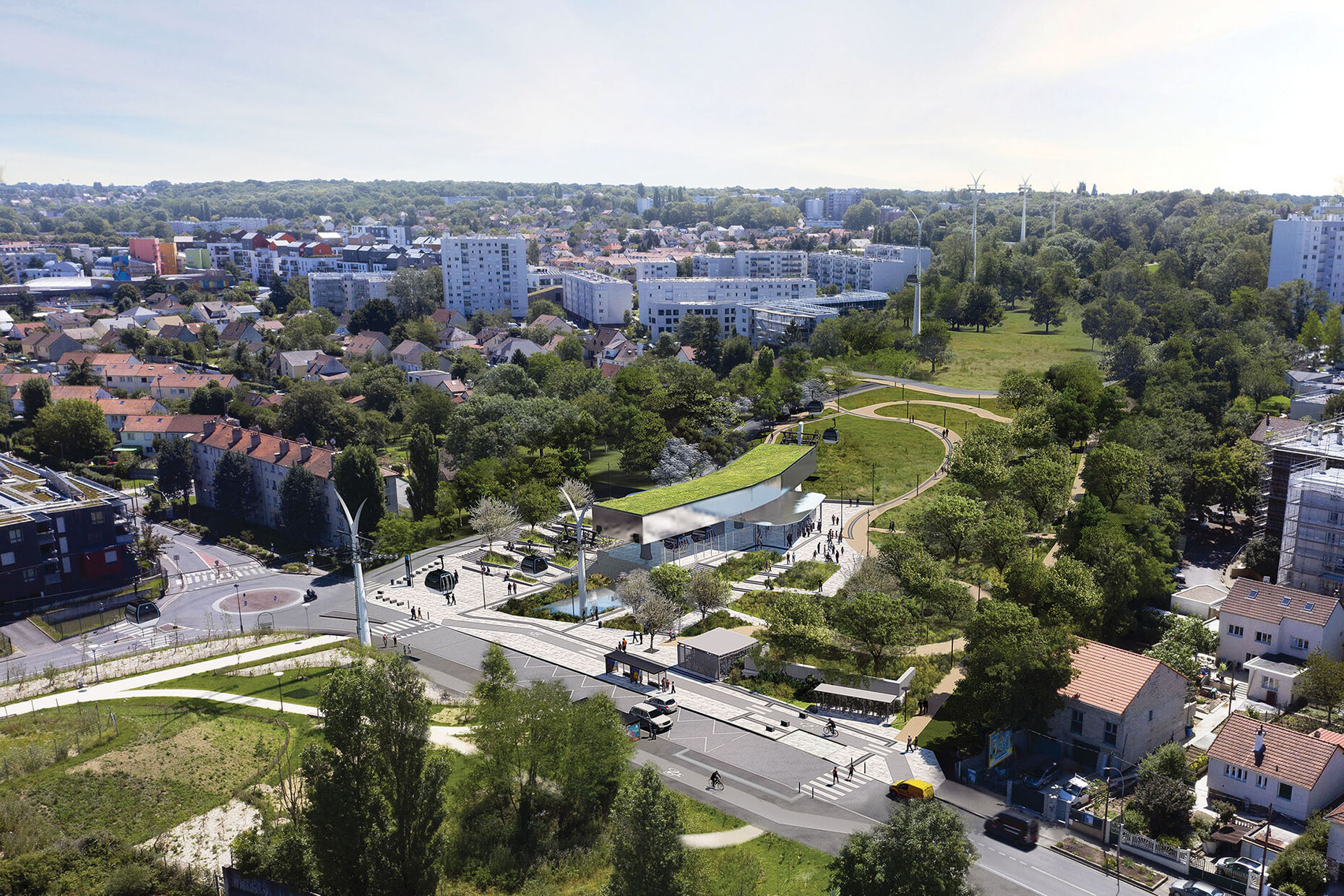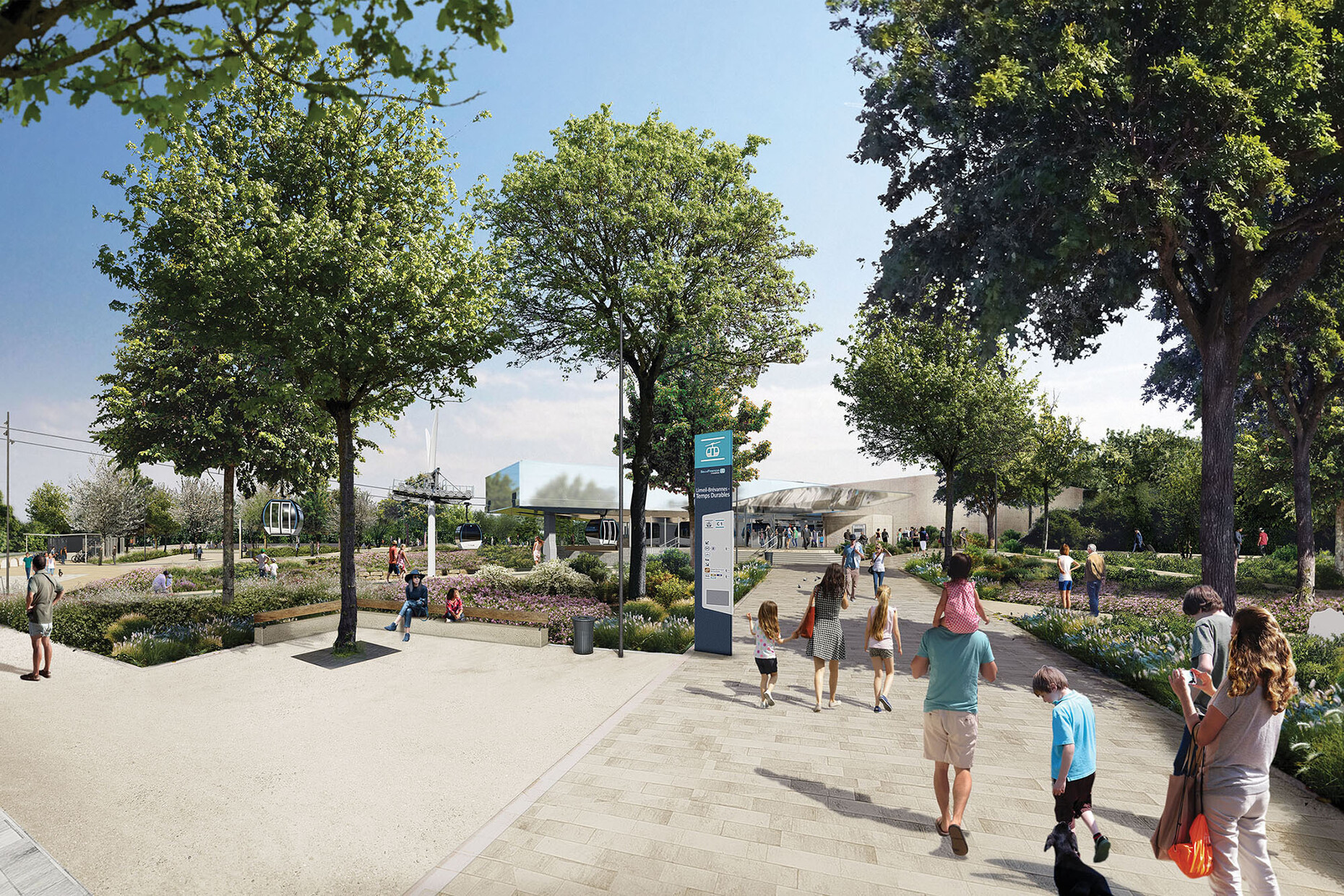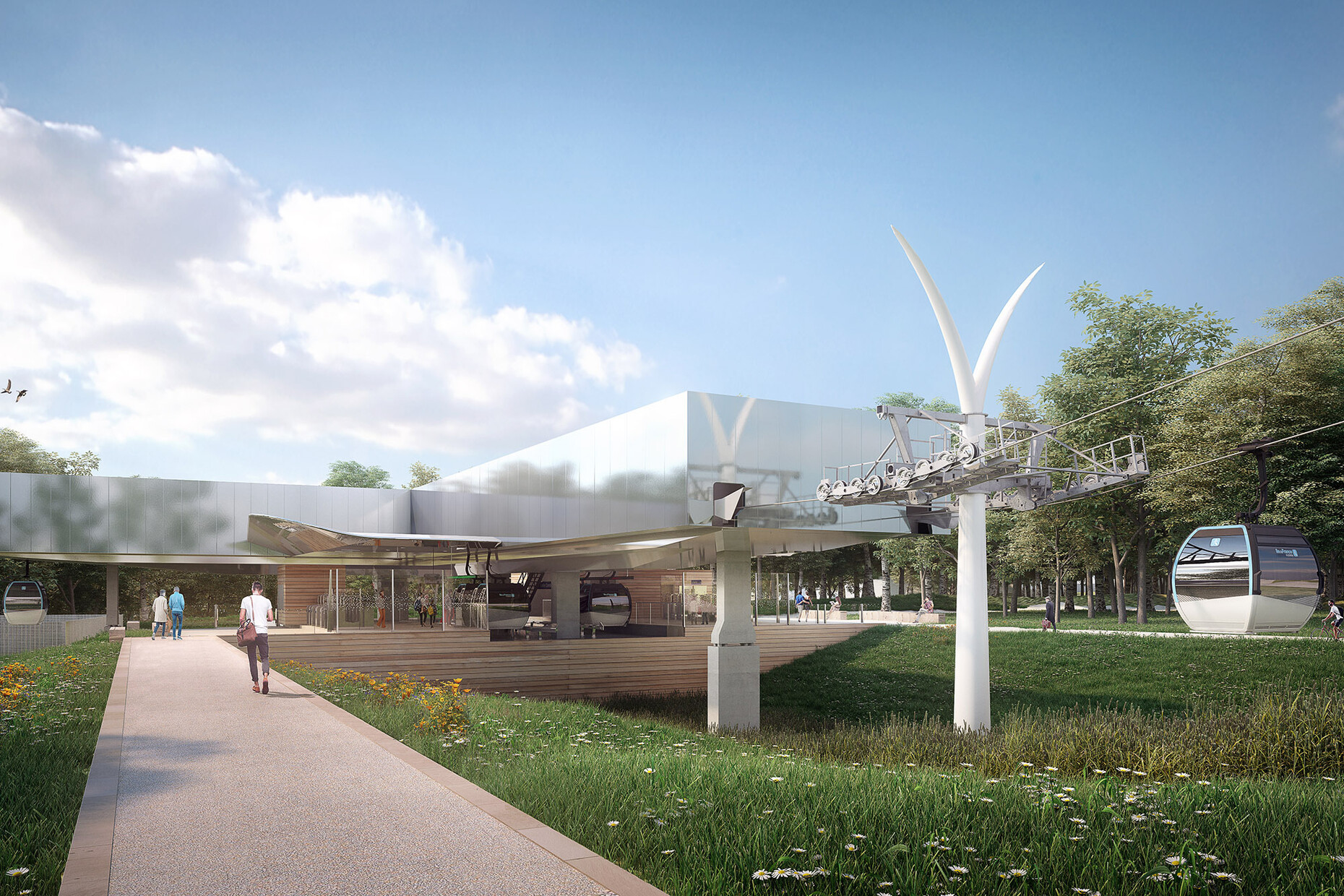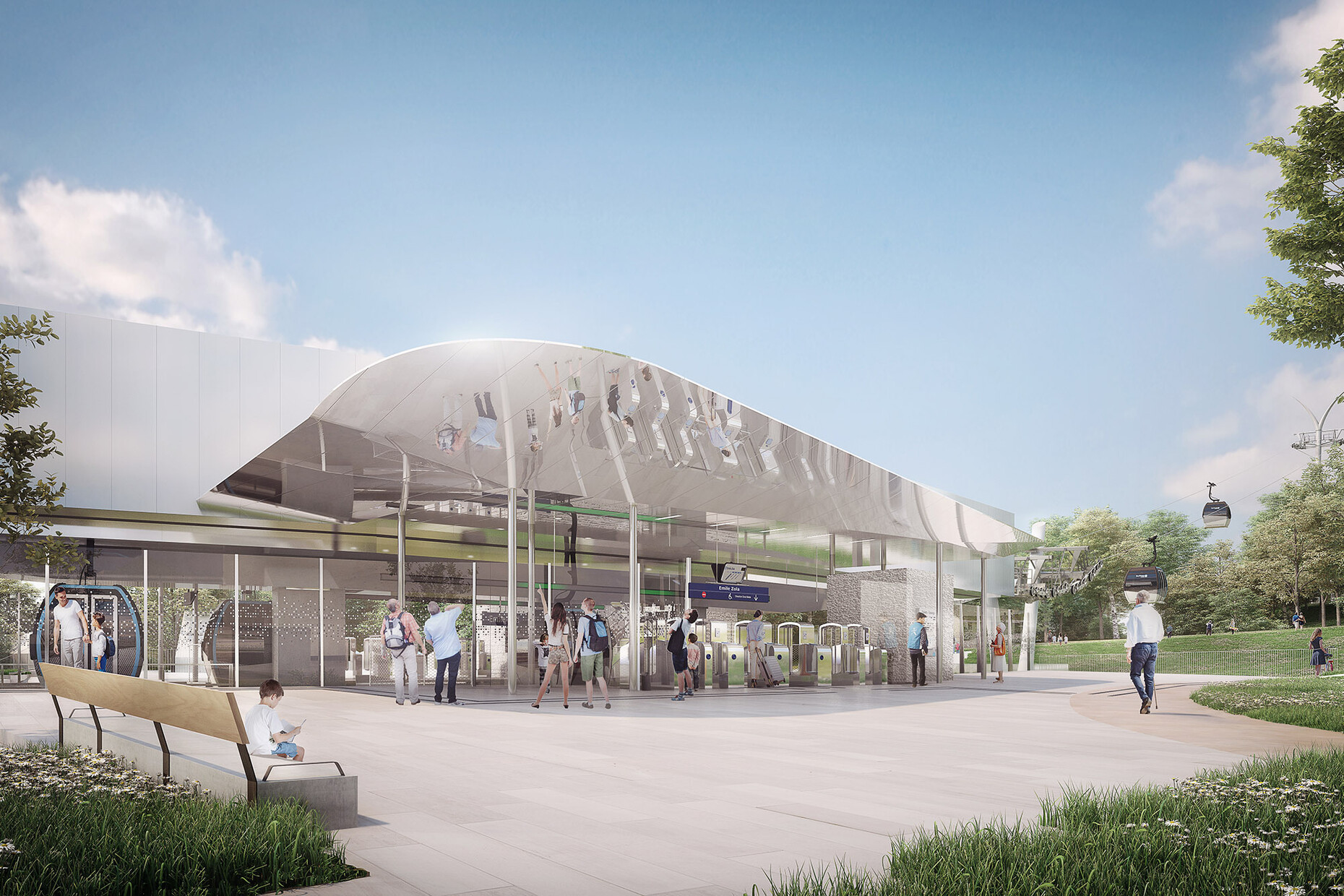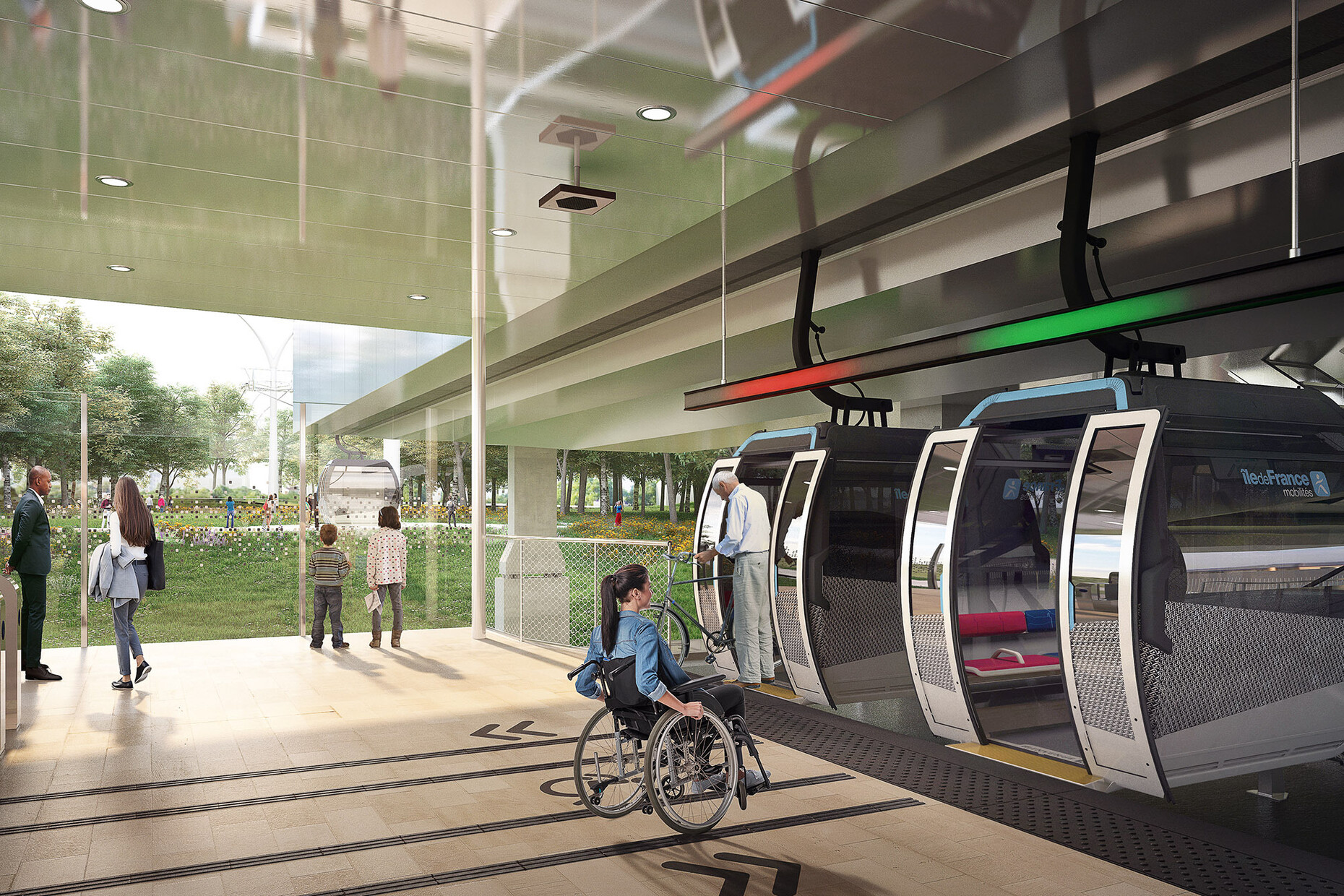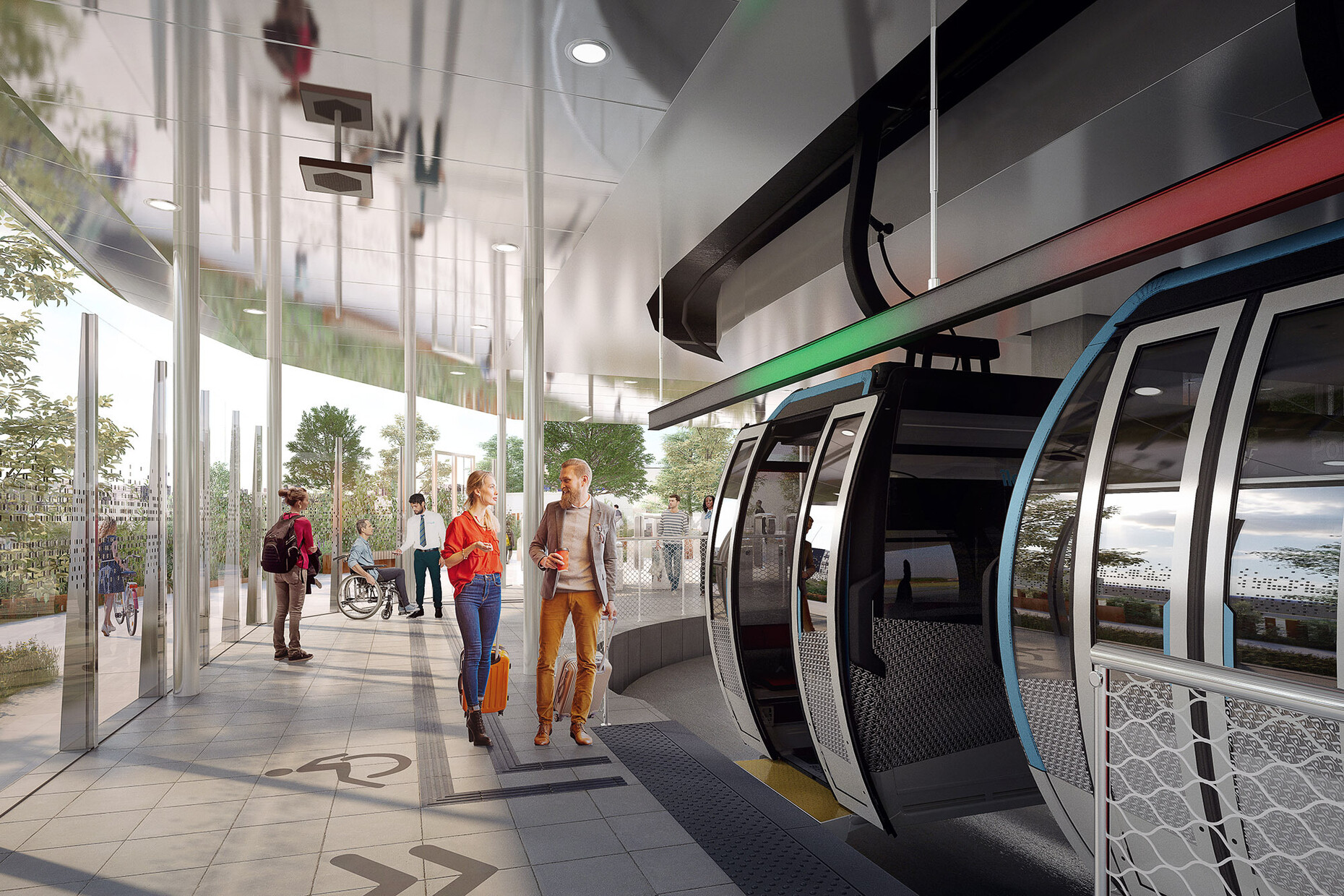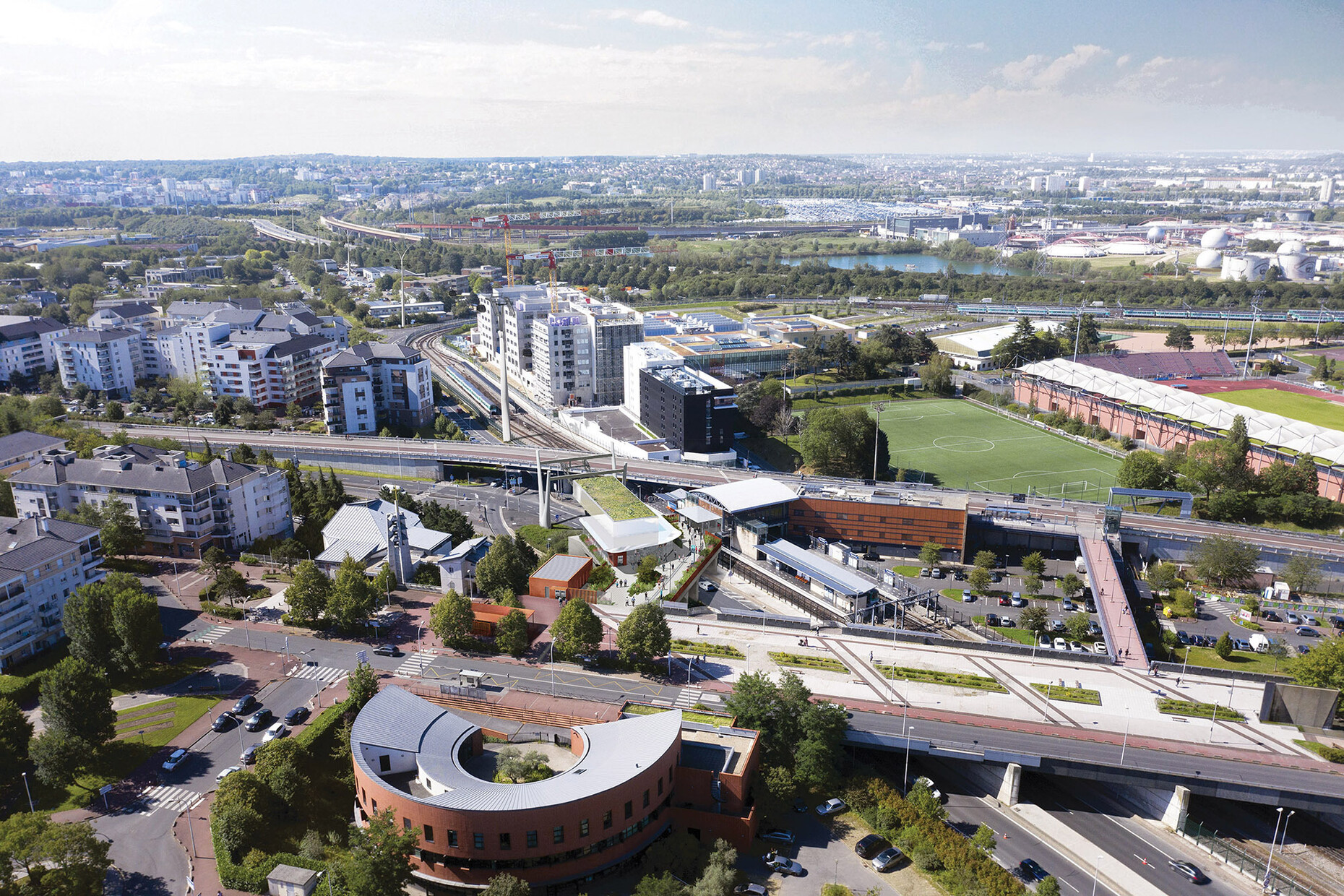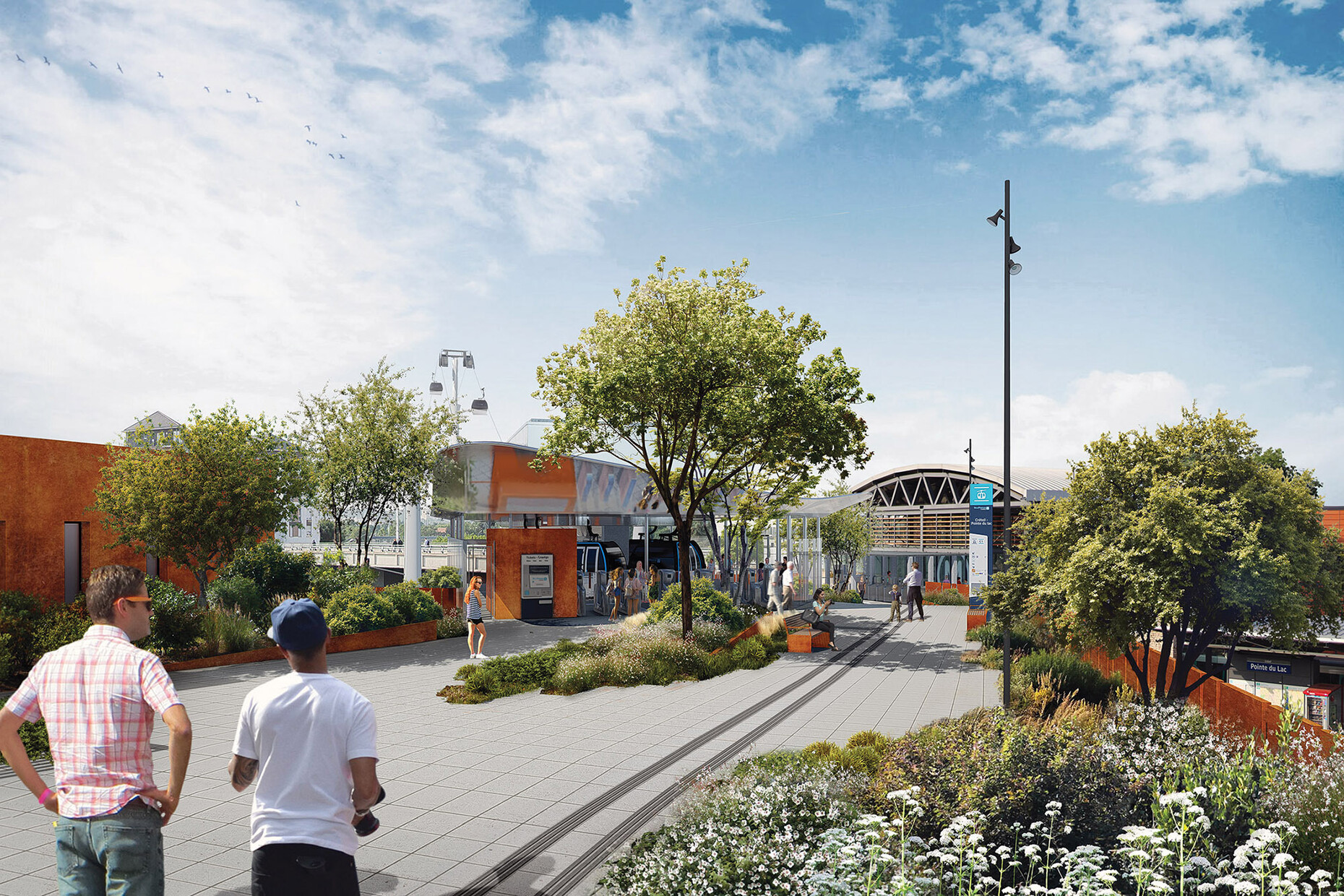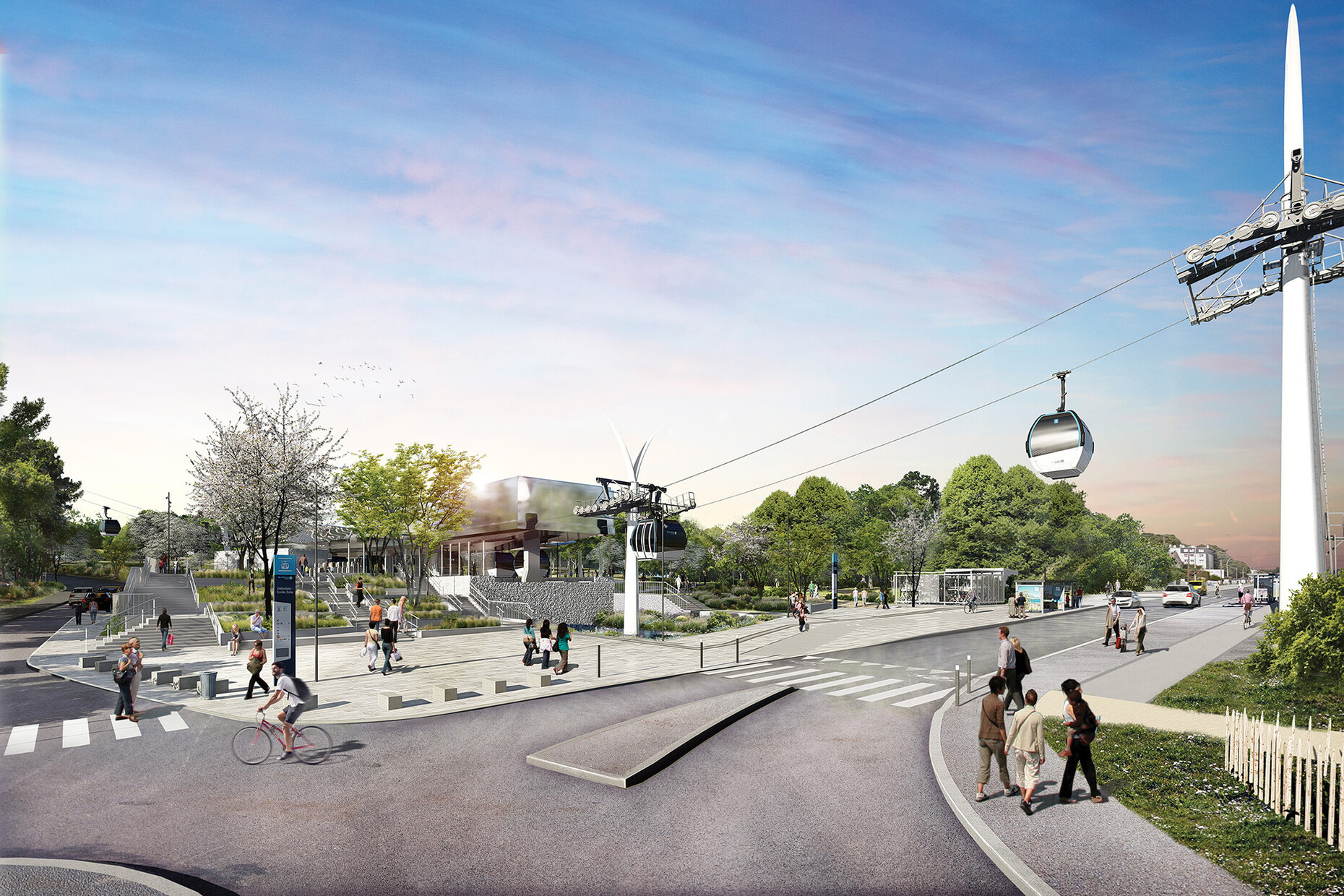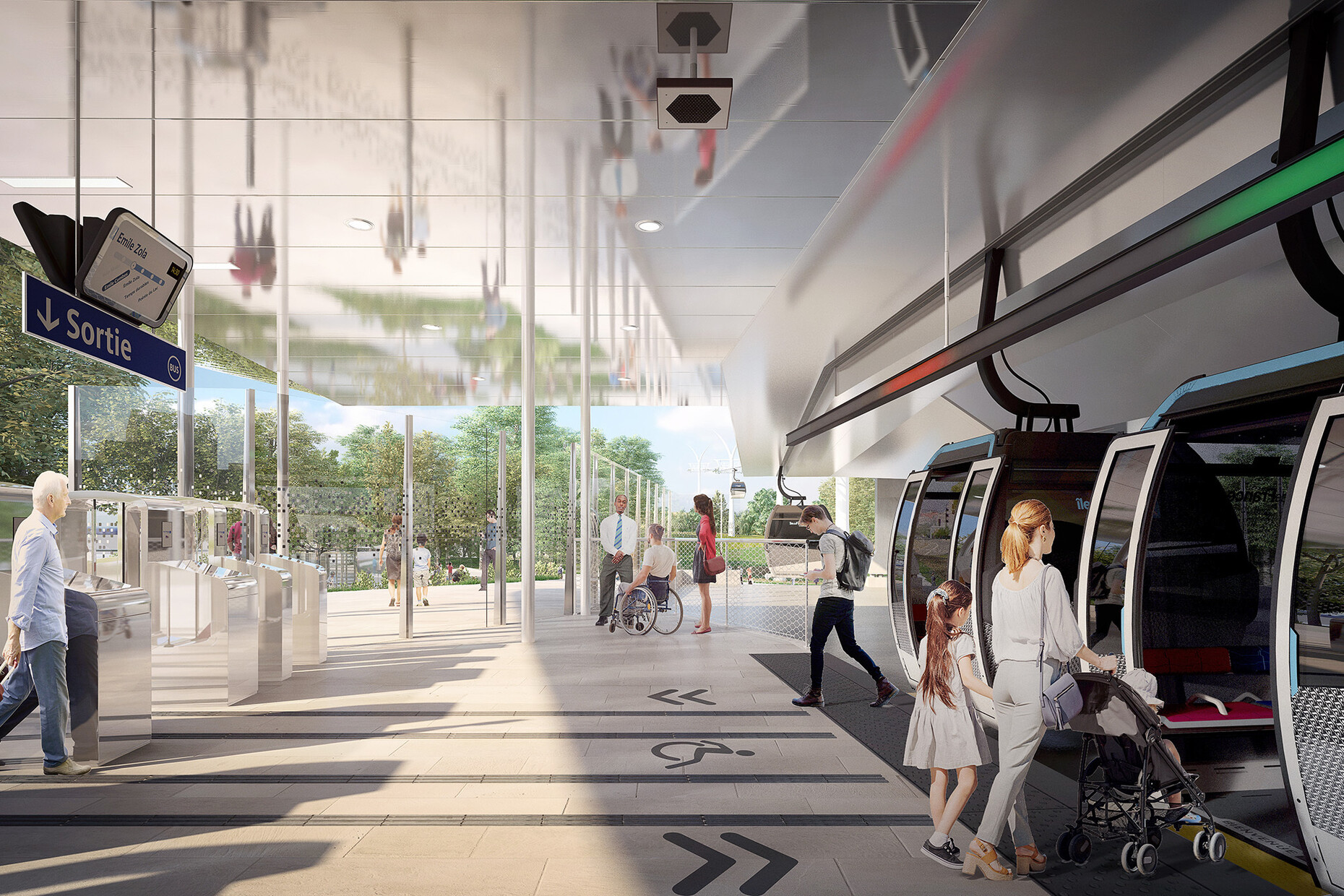Multimodal Spaces
The multimodal linking and supplementing of existing transport systems is presently one of the central mobility issues in urban areas. One example of this are aerial tramways for local public transport: While uncommon in Europe thus far, they are already an integral part of respective transport networks in Asian and Central and South American metropolises. European cities are now also increasingly discovering the potential of aerial tramways as a complementary mobility solution that can reduce congestion, for example in the form of the Câble 1 (C1) line, which is currently being built in the greater Paris area. There, aerial tramway manufacturer Doppelmayr/Garaventa is planning an urban tramway project in the Île-de-France region together with various experts in infrastructure planning, landscape architecture, civil engineering and architecture. The Câble 1 (C1) line, which is scheduled to go into operation in 2025, will connect four different communities in the Val-de-Marne département that have a catchment area of around 20,000 inhabitants and 6,000 jobs.
As a mobility solution, aerial tramways offer a number of advantages: They require less land than rail or road transport systems and take less time to build. At the same time, they can bridge difficult topographies and obstacles. By using a completely different level of traffic above the ground, they are not affected by road congestion and are also able to run frequently. Added to this are low investment and operating costs relative to other transport systems such as rail-bound trams or the metro, and the possibility of operating aerial tramways largely autonomously due to the extensive digital automation of their operating processes. This is illustrated by the example of Line Câble 1 (C1), which will run southeast of the centre of Paris over a total length of 4.5 kilometres. For three quarters of its length the new line follows a regional road parallel to a TGV rail line and the course of the Marne River, creating new connections because it can simply float over existing obstacles. It thus expands public transport by connecting its five stations to other public transport modes such as the metro, bus and regional train.
The aim is to better integrate adjacent neighbourhoods into the region's existing public transport network, as various transverse bus and regional rail lines can be linked together. This will bring about a considerable improvement in public transport services for the people living there, while also reducing travel times for commuters. Line Câble 1 (C1) is designed to carry 3.2 million passengers per year, with ten-passenger, barrier-free cabins carrying 1,600 passengers per hour and direction. It thus exemplifies what a multimodal approach to transportation planning can look like, in order to support cities in their ability to further develop. This includes the sensible combination of different modes of transport in order to generate synergies: By relying less on existing transport systems and looking for new connections, a more seamless transition can be created between individual modes of transport. As a result, as in the case of the Câble 1 line, neuralgic traffic hotspots become less congested and pressure on the existing transport system is relieved.
Doppelmayr/Garaventa will also be addressing this topic at InnoTrans, the international trade fair for transport technology, from 20 to 23 September 2022 in Berlin. The aerial tramway manufacturer will invite visitors to the Mobility for the Future discussion forum at its stand in Hall 2.2/450 on Wednesday, 21 September at 4:00 pm. Topics will include the future of mobility from an operator's point of view as well as the challenges involved in planning and building transport infrastructure projects with multimodal solution approaches from a planner's point of view. To this end Doppelmayr/Garaventa has invited various experts to take part: The mobility service provider Transdev Verkehr GmbH, for example, will discuss the requirements transport operators have regarding future mobility, while Drees & Sommer will report on the challenges of planning and building transport infrastructure projects with new multimodal solution approaches. Reinhard Fitz, Head of International Business Development at Doppelmayr, will also show how aerial tramway solutions specially designed for urban areas can meet the requirements of future mobility concepts, and will also provide an outlook on future multimodal development.
Doppelmayr at the InnoTrans 2022
20 - 23 September 2022, Berlin
Hall 2.2/450
Mobility for the Future
Mobility talk at the Doppelmayr trade fair stand
